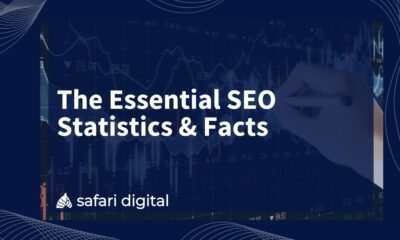Fashion
Men Fashion: A Glimpse Into Indian Ethnic Wear
Published
6 months agoon
By
Abdus Subhan
History of Indian Ethnic Wear for Men: Unveiling the roots and evolution of traditional clothing in India.
Indian ethnic wear for men has a rich and fascinating history, deeply rooted in the traditions and customs of the country. The evolution of traditional clothing in India can be traced back centuries, where garments were not just a means of covering the body, but also symbolized social status, cultural identity, and regional affiliations. Traditional Indian menswear predominantly consisted of garments like dhoti, kurta, sherwani, and turbans, each holding its own significance and reflecting the diversity of India’s cultural heritage.
The roots of Indian ethnic wear can be found in the ancient Indus Valley Civilization, where evidence of draped clothing, similar to the dhoti, has been discovered. Over time, as different empires and dynasties ruled over India, they brought their own fashion influences and styles, leading to the amalgamation of various regional clothing traditions. This fusion gave rise to the diverse range of ethnic wear that we see today, with each garment representing the distinct cultural identity of different communities and regions across the country.
Key Elements of Indian Ethnic Wear: Exploring the unique features and components that define men’s ethnic fashion in India.
Indian ethnic wear for men is characterized by its rich cultural heritage and intricate craftsmanship. One of the key elements that define men’s ethnic fashion in India is the use of vibrant colors and elaborate patterns. Traditional clothing such as kurta-pajama, sherwani, and dhoti, are often adorned with intricate embroidery, sequins, and mirror work, which adds a touch of elegance and opulence to the garments. These unique features, combined with the skillful use of motifs inspired by nature, spirituality, and mythology, make Indian ethnic wear a visual delight.
Another important aspect of men’s ethnic fashion in India is the emphasis on comfortable yet stylish silhouettes. The use of breathable fabrics like cotton, linen, and silk ensures that the attire is light and suitable for the Indian climate. Whether it’s the loose and flowing kurta or the fitted bandhgala jacket, the design of Indian ethnic wear is both functional and fashionable. The intricate details, along with the use of drapes and layers, create a sense of grandeur and make men’s ethnic outfits stand out in any crowd.
Popular Styles of Indian Ethnic Wear: Highlighting the various traditional garments and outfits preferred by Indian men.
Kurta Pajama: One of the most iconic and widely worn traditional outfits for men in India is the kurta pajama. This ensemble typically consists of a loose-fitting, knee-length shirt known as the kurta, paired with loose-fitting trousers called pajama. Kurta pajamas are available in a variety of fabrics such as cotton, silk, and linen, making them suitable for both casual and formal occasions. The beauty of this attire lies in its versatility, as it can be embellished with intricate embroidery or adorned with delicate prints, allowing men to effortlessly showcase their personal style.
Sherwani: For special occasions like weddings and festivals, men often opt for the regal and elegant sherwani. This traditional garment is a long coat-like jacket that is worn over a kurta and paired with fitted trousers known as churidar. Sherwanis are typically made from luxurious fabrics like silk, brocade, or velvet, and are adorned with exquisite embroidery, beads, and sequins. The sherwani’s rich and opulent design exudes a sense of grandeur, making it a popular choice among grooms and those seeking a sophisticated ethnic look.
Fabrics Used in Indian Ethnic Wear: Understanding the materials and textiles commonly used in crafting Indian ethnic attire.
Fabrics play a crucial role in crafting Indian ethnic attire, as they not only contribute to the overall aesthetic appeal but also determine the comfort and durability of the garments. Cotton, a staple fabric in Indian fashion, is favored for its breathability and softness, making it a popular choice for daily wear. It is commonly used in crafting traditional outfits like kurta-pajama and dhoti, providing a relaxed and casual look. Silk, on the other hand, is a luxurious fabric that exudes elegance and grandeur. It is widely used in crafting wedding ensembles and formal attire, lending a regal touch to the outfits. With its smooth texture and vibrant sheen, silk adds a sense of opulence to Indian ethnic wear.
Another widely used fabric in Indian ethnic wear is velvet, which is revered for its plush and luxurious feel. Often used in creating Nehru jackets and sherwanis, velvet adds a touch of sophistication and glamour to men’s traditional outfits. Additionally, wool and wool-blend fabrics are commonly utilized in crafting winter wear, providing warmth and insulation during the colder months. These fabrics are favored for their ability to keep the body cozy and comfortable, while also allowing for stylish layering options. Overall, the choice of fabrics in Indian ethnic wear is vast and varied, ensuring that there is something for every occasion, climate, and personal style preference.
Colors and Patterns in Indian Ethnic Wear: Delving into the vibrant color palettes and intricate patterns that adorn Indian traditional clothing.
Indian ethnic wear is known for its vibrant color palettes and intricate patterns, both of which play a significant role in defining the aesthetics of traditional clothing in India. The use of bold and striking colors such as red, blue, green, and yellow is prevalent in Indian ethnic wear, showcasing the rich cultural heritage and celebratory spirit of the country. These vibrant hues not only add a pop of color to the outfits but also symbolize various aspects of Indian culture and traditions.
In addition to vibrant colors, Indian ethnic wear also features intricate patterns that are beautifully crafted and visually appealing. From delicate embroideries to exquisite block prints, each pattern tells a unique story and reflects the craftsmanship and attention to detail inherent in Indian traditional clothing. These patterns are often inspired by nature, mythological figures, or geometric designs, adding depth and a sense of artistry to the overall aesthetic of Indian ethnic wear. Whether it is the intricate mirror work on a traditional Rajasthani kurta or the rich gold thread embroidery on a South Indian sherwani, the multitude of patterns in Indian ethnic wear truly make these outfits stand out.
Occasions and Events for Indian Ethnic Wear: Discovering the different festivities and celebrations where men showcase their ethnic outfits.
Indian ethnic wear holds a significant place in the wardrobe of men, especially during traditional festivities and celebrations. One such occasion is Diwali, also known as the Festival of Lights. During Diwali, men don vibrant kurta-pajama sets or sherwanis adorned with eye-catching embellishments. The traditional attire not only reflects the joy and happiness of the festival but also adds a touch of elegance and sophistication to the overall look. Similarly, weddings in India are grand affairs where men don elaborate ethnic outfits such as sherwanis or bandhgalas paired with matching turbans. These outfits symbolize the cultural heritage and regal magnificence, making them an ideal choice for such auspicious occasions.
Another significant event where men proudly flaunt their ethnic wear is Eid, a religious festival celebrated by Muslims worldwide. Men often wear traditional outfits like the pathani suit or the kurta-pajama with embroidered jackets on this festive occasion. These attires exude an aura of gracefulness and offer a blend of comfort and style, allowing them to participate in the festivities with utmost ease. Additionally, during Navratri, a nine-night celebratory extravaganza dedicated to Hindu goddesses, men can be seen sporting colorful and intricately designed traditional attire such as dhoti-kurta or kediyu. These outfits not only exemplify the rich cultural heritage but also enable men to actively participate in the traditional dance forms like Garba and Dandiya, adding a touch of exuberance to the festivities.
Regional Variations in Indian Ethnic Wear: Exploring the diverse cultural influences and styles of ethnic wear across different regions of India.
India is a land of diverse cultures and traditions, and each region boasts its own unique style of ethnic wear for men. From the vibrant and colorful garments of Rajasthan to the elegant and understated attire of Kerala, the regional variations in Indian ethnic wear reflect the rich heritage and historical influences of each area. In North India, the traditional clothing for men often includes the iconic kurta-pajama combination, which is usually made of cotton or silk fabric and adorned with intricate embroidery or prints. On the other hand, South Indian ethnic wear showcases a more minimalistic and refined aesthetic, with men commonly donning dhotis and kurta, paired with a stole or angavastram.
Contemporary Adaptations of Indian Ethnic Wear: Examining the fusion of traditional and modern elements in men’s ethnic fashion.
The world of Indian ethnic wear for men has witnessed a fascinating transformation in recent times, with the rise of contemporary adaptations that blend traditional and modern elements seamlessly. These contemporary adaptations have breathed new life into traditional garments, making them more relevant and appealing to the current generation. From fusion sherwanis that combine Western and Indian aesthetics to Indo-Western fusion kurtas and jackets, men’s ethnic fashion today offers a plethora of options for those who seek a modern twist to their traditional attire.
One of the key elements of contemporary adaptations is the use of unconventional fabrics and prints. While silk and cotton remain popular choices for traditional clothing, designers are now experimenting with materials like linen, rayon, and even denim to create unique and stylish ethnic wear for men. Similarly, vibrant and colorful prints inspired by tribal art, geometric patterns, and abstract motifs are adorning traditional outfits, adding a contemporary touch to their overall appeal. These adaptations not only cater to the evolving tastes of the modern man but also provide a refreshing take on Indian ethnic wear that breaks away from conventional norms.
Styling Tips for Indian Ethnic Wear: Providing practical advice on how to accessorize and style Indian ethnic outfits for men.
When it comes to styling Indian ethnic wear for men, attention to detail is key. One essential aspect to consider is accessorizing appropriately. Adding the right accessories can elevate the overall look and showcase your personal style. For example, pairing a classic kurta with a statement brooch or a traditional sherwani with a finely embroidered stole can instantly enhance your outfit. It is also important to pay attention to footwear – opting for mojris or juttis can add a touch of traditional charm to your ensemble. Additionally, don’t forget to complete your look with a coordinating turban or safa, which not only adds a regal touch but also celebrates the rich cultural heritage of Indian ethnic wear.
Another important aspect to keep in mind is the art of layering. Layering can add depth and versatility to your Indian ethnic outfit. For instance, pairing a kurta with a waistcoat or a Nehru jacket can create a more structured and polished appearance. Experimenting with different textures and patterns in your layers can create a visually appealing ensemble. Additionally, playing with different lengths, such as pairing a long kurta with a cropped jacket, can add an interesting twist to your overall look. Don’t be afraid to mix and match different elements to create a unique style that reflects your personality while staying true to the traditional essence of Indian ethnic wear.
Celebrities and Influencers in Indian Ethnic Wear: Showcasing famous personalities who embrace and promote Indian ethnic fashion.
India is a country where celebrities and influencers hold immense power and influence over the masses. From Bollywood stars to social media influencers, many famous personalities have embraced and promoted Indian ethnic fashion. They have not only made traditional clothing a style statement but, also contributed to reviving and preserving the rich cultural heritage of Indian ethnic wear.
These celebrities and influencers have been seen donning stunning traditional outfits like sherwanis, kurta-pyjamas, dhotis, and bandhgalas on various occasions. Their sartorial choices have successfully showcased the beauty and elegance of Indian ethnic wear to the world. With their influential presence on social media platforms, they have played a significant role in popularizing Indian ethnic fashion among the younger generation, making it a trend that is here to stay.
What is the history of Indian ethnic wear for men?
The history of Indian ethnic wear for men dates back to ancient times. Traditional clothing, such as dhoti, kurta, sherwani, and bandhgala, has been worn for centuries and carries cultural significance.
What are the key elements of Indian ethnic wear?
The key elements of Indian ethnic wear for men include intricate embroidery, embellishments, unique cuts and silhouettes, and the use of traditional fabrics such as silk, cotton, and linen.
What are some popular styles of Indian ethnic wear for men?
Popular styles of Indian ethnic wear for men include sherwani, kurta-pajama, dhoti-kurta, Nehru jacket, and bandhgala. These garments are often accompanied by accessories like turbans and traditional footwear.
What fabrics are commonly used in Indian ethnic wear?
Indian ethnic wear for men is crafted using various fabrics, including silk, cotton, linen, khadi, brocade, and velvet. Each fabric adds its own texture and appeal to the outfit.
What are the typical colors and patterns found in Indian ethnic wear?
Indian ethnic wear is known for its vibrant colors and intricate patterns. Rich hues like red, gold, blue, and green are commonly used, and patterns such as paisley, floral motifs, and geometric designs are popular.
On what occasions or events do men wear Indian ethnic wear?
Indian men often wear ethnic attire for cultural festivals, weddings, religious ceremonies, and special occasions like Diwali or Eid. Ethnic wear is also preferred for formal events and traditional gatherings.
How does Indian ethnic wear vary across different regions of India?
Indian ethnic wear showcases regional variations in terms of style, fabric, and embellishments. Each region in India has its own unique cultural influences, resulting in diverse styles of ethnic wear.
How has Indian ethnic wear adapted to modern fashion trends?
Contemporary adaptations of Indian ethnic wear blend traditional elements with modern fashion trends. Designers experiment with cuts, prints, and fabrics to create fusion outfits that cater to the evolving fashion tastes of men.
How can men style and accessorize Indian ethnic wear?
Men can style Indian ethnic wear by pairing it with appropriate footwear, adding accessories like turbans, stoles, or brooches, and experimenting with different hairstyles. It’s important to find a balance between traditional and modern elements.
Which celebrities and influencers promote Indian ethnic fashion?
Many celebrities and influencers in India embrace and promote Indian ethnic fashion. Popular figures like Amitabh Bachchan, Shah Rukh Khan, Ranveer Singh, and Virat Kohli are often seen wearing ethnic outfits and endorsing traditional clothing brands.
Recent News


4 Amazing Trips for Your Family
Choosing somewhere for a family vacation that would pique the attention of adults and kids alike can be a fun...


Customising Your Makeup with Blendable Blush Options
In cosmetics, one’s face is a canvas for self-expression and creativity. Among the myriad of products available, blush is a...


The Benefits of Regular Home Maintenance
Regular home maintenance is essential for maintaining and even raising the value of your house. A proactive approach to repairs...


Understanding the Importance of SEO in Adelaide
In the digital marketplace, Adelaide businesses are in a continuous contest to gain the attention of their target audiences. With...


Breaking Down the Numbers: Understanding the Average Traveling Nurses Pay
The open road, adventure, and the chance to heal – travel nursing promises an undeniable allure. But amidst the excitement,...


Dealing with Oily Skin in Summer: Tips and Tricks
As the temperature rises, those with oily skin often face an additional challenge—maintaining a clear and balanced complexion. Excess oil...


Mountain Wedding Ideas for 2024
A mountain wedding is a stunning choice for couples who cherish nature and desire a distinctive wedding experience. Whether you...


3 Of The Best Ways To Keep Your Salon Clean
It is of the utmost importance to ensure that a salon is kept scrupulously clean, not just for the sake...


3 Reasons You Should Get Blood Tests Every Year
Regular blood tests are essential for preserving general health and identifying potential problems early on. Medical professionals can evaluate your...


How to Make Your Next Crafts Project Pop
Crafting is a creative outlet that allows individuals to express themselves through various mediums such as paper crafts, sewing, painting,...
